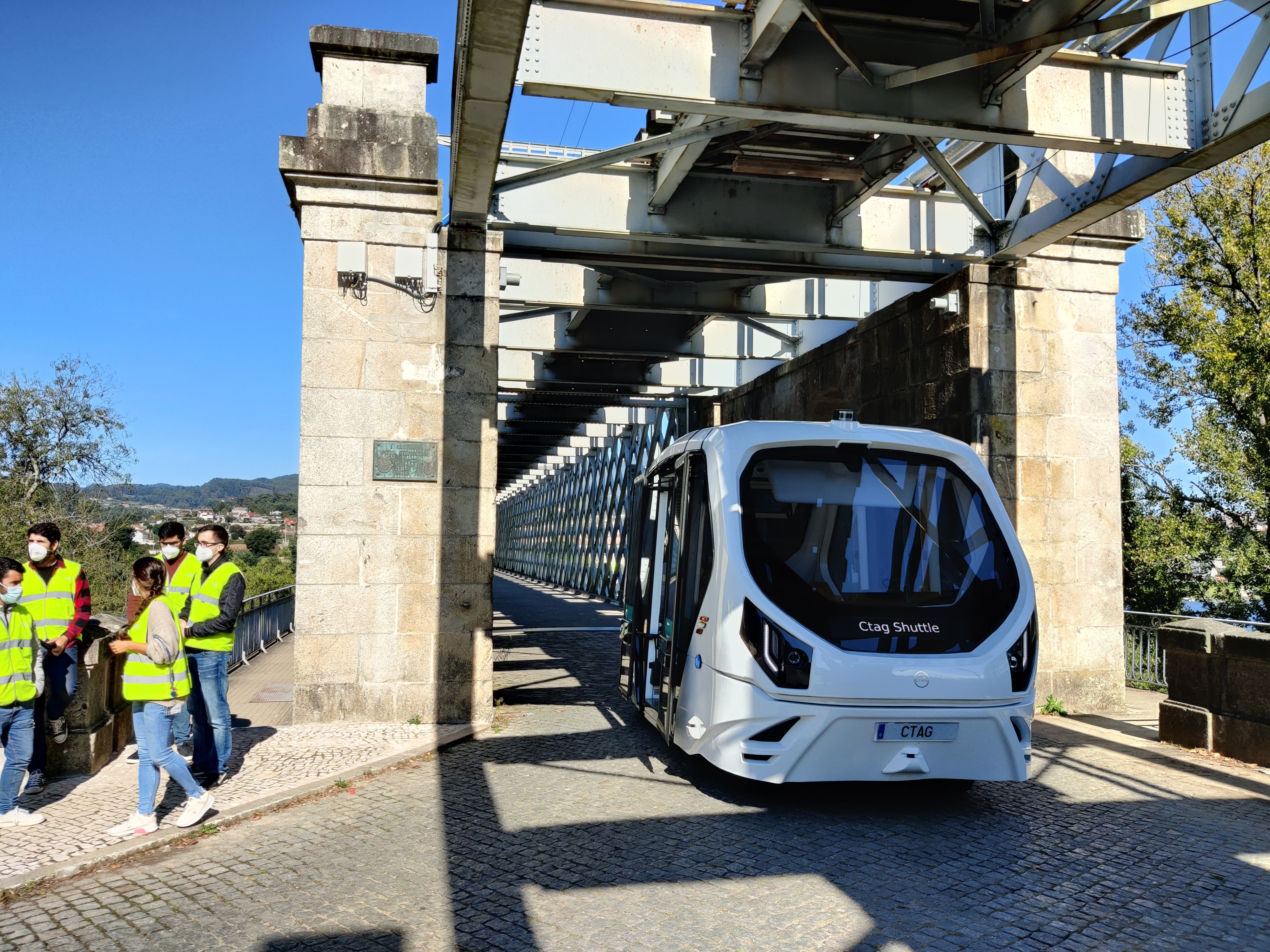-
Categories
Breaking boundaries with 5G across the Spain-Portugal border
The first ever 5G autonomous driving public demonstration across the Spain-Portugal border will take place today at the International Bridge Tui-Valença. The demonstration attests to the added value of 5G technology for advanced Connected and Automated Mobility (CAM) services, and is part of the European funded 5G-MOBIX Final Demonstrations. The demonstration will showcase the impact of tested solutions through various scenarios that target the specific characteristics of this dynamic border route, and rely on the low latency and service continuity enabled by the 5G network.
The primary goal of 5G-MOBIX is to set up the basis for the deployment of 5G corridors, providing indications to policymakers, private and public investors, and relevant industries on the potential of sufficient and reliable 5G capacity and coverage based on the demands of connected, automated vehicles.
The second is to give a strong impulse to business opportunities development around 5G for CAM services and applications. We believe that such services will contribute to improved road safety, traffic management efficiency and driving comfort, as well as reduced carbon emissions.

“The EU’s single market benefits from seamless cross-border transportation, while at the same time connectivity suffers from interruptions when crossing borders,” says Coen Bresser, Senior Manager of Innovation and Deployment at ERTICO-ITS Europe and 5G-MOBIX Project Coordinator.
CAM use cases come with challenging connectivity requirements, especially in a cross-border context, where 5G technology deployment may be slower than in densely populated urban centres. Various configurations, scenarios and 5G features have been tested on public roads under diverse traffic, network coverage and service demand conditions, as well as considering the distinct legal, business, and social aspects at each site. Their performance was evaluated in the context of cross-border challenges concerning telecommunication infrastructure, application security, privacy and regulatory issues.

5G-MOBIX consortium brings together 58 partners from 13 countries in the EU, Turkey, China, and South Korea. The project Spain-Portugal Cross-border Corridor connects the cities of Vigo and Porto and its research team covers the complete value chain, from car manufacturers, telecom operators, to public authorities and research institutions. Together they have explored the challenges of seamless interoperation between multiple operators from different countries.
“Automated driving needs seamless connectivity, and today 5G-MOBIX proves that it is possible across the Spanish-Portuguese border, not only through technology, but for a large part through cooperation in this complex stakeholder group,” highlights the 5G-MOBIX Project Coordinator.
Note to the editors
The 5G-MOBIX EU-funded Innovation Action (2018-2022) has trialled automated vehicle functionalities and services over 5G networks along two Cross-Border Corridors in Greece-Turkey and Spain-Portugal, as well as six local, mainly urban, Trial Sites in France, Germany, Netherlands, Finland, China and South Korea. The local Trial Sites have brought complementary insights to the cross-border issues trialled at the Corridors.
The trials have addressed five defined categories of Connected and Automated Mobility (CCAM) use cases: Advanced Driving, Platooning, Extended Sensors, Remote Driving and Vehicle Quality of Service Support. The trials have allowed to evaluate the benefits and challenges of provisioning 5G-enabled CAM services in cross-border conditions, as well as to conduct impact assessments and cost/benefit analyses for 5G corridors deployment and associated business opportunities.
The 5G-MOBIX Spanish-Portuguese cross-border corridor consists of the following partners: CTAG is the Leader of the Spanish-Portuguese corridor trial site in the project; they also coordinate the connected and automated vehicles and infrastructure devices in the demonstrations. Telefónica and NOS represent the Spanish and Portuguese Mobile Network Operators. Respectively; Nokia Spain and Nokia Portugal are responsible for the Network Infrastructure on the Spanish and Portuguese sides. Instituto de Telecomunicações (IT) and A-to-Be are respectively responsible for the connected vehicle in the demonstration at the New Bridge. DGT, Infraestruturas de Portugal, IMT, Norte Litoral are in charge of road management, closures and securing authorizations to carry out the demonstrations. ALSA provided the buses for the trials of the multimedia streaming service deployed on long-distance buses. Moreover, the Concello de Tui and Câmara de Valença have had a big part in making the trials and this demonstration event possible in both cities.
Link to the full press pack (including a summary of the project results and key messages, and descriptions of the use cases demonstrated) - available in English, Spanish and Portuguese.